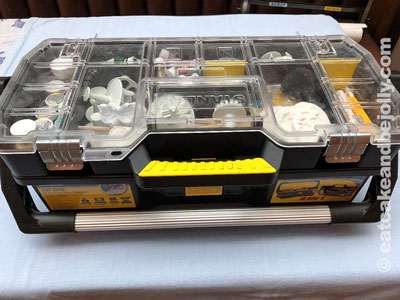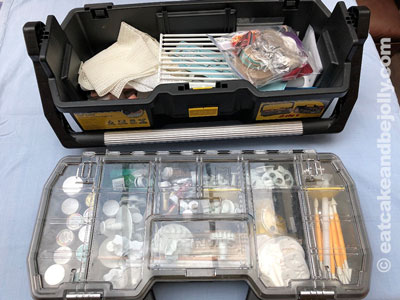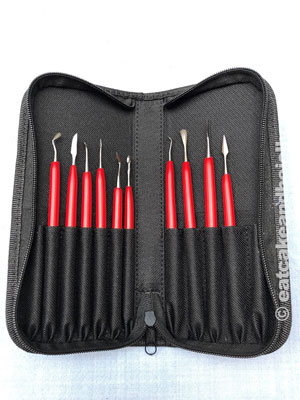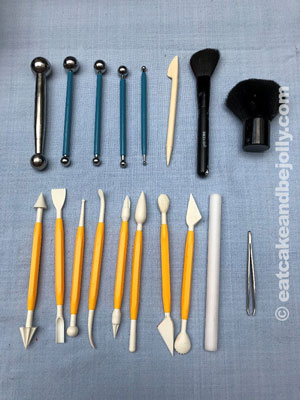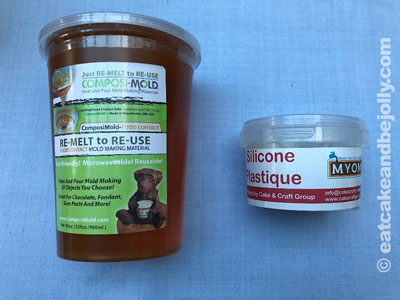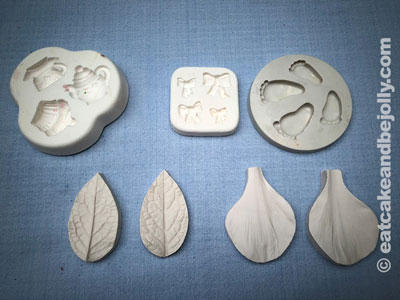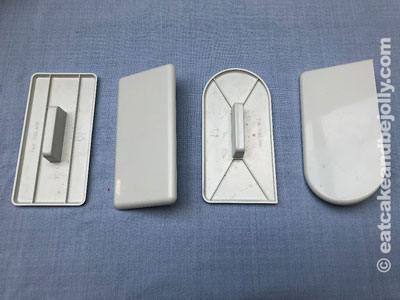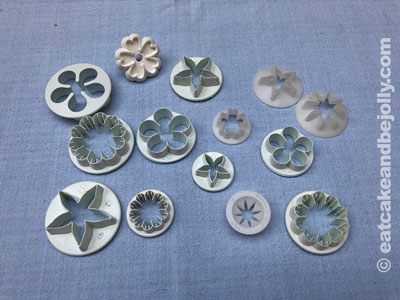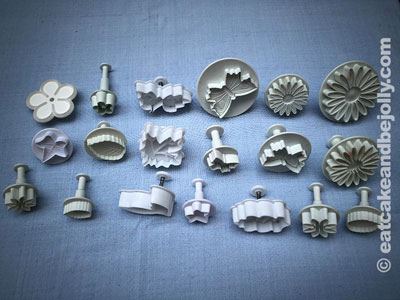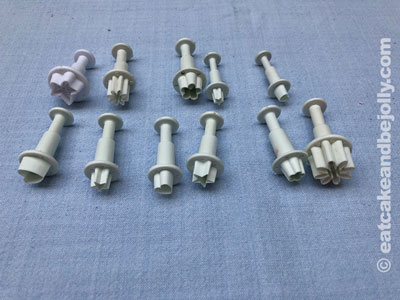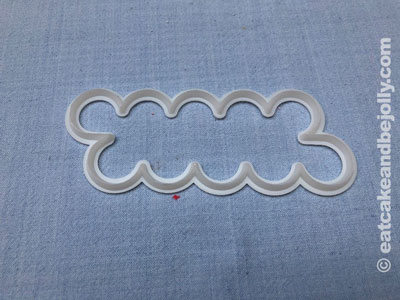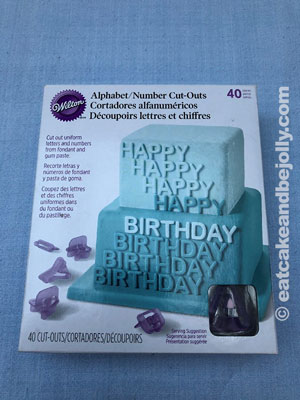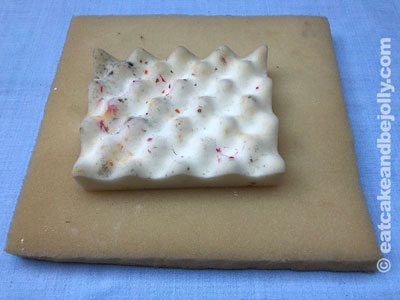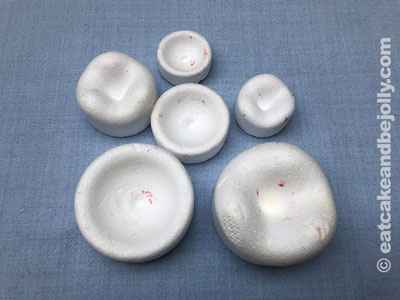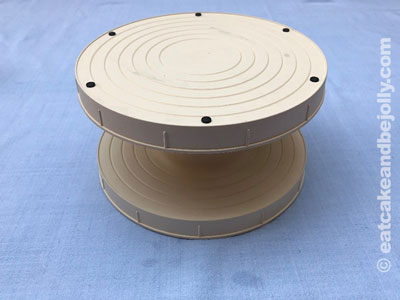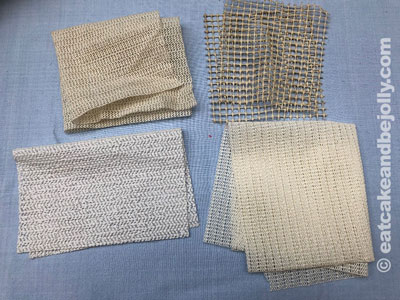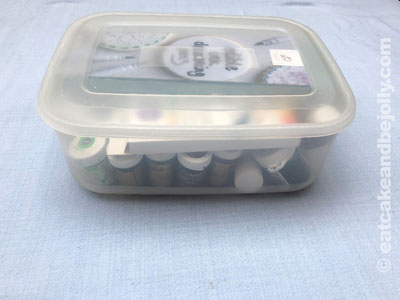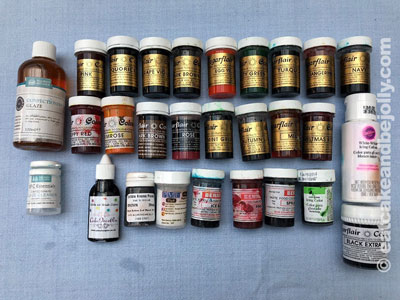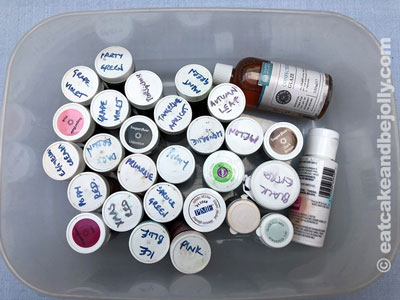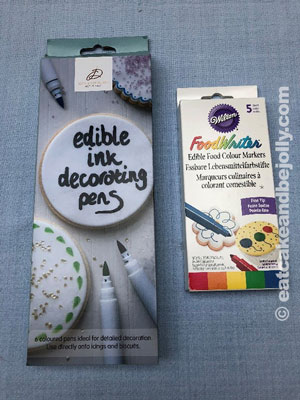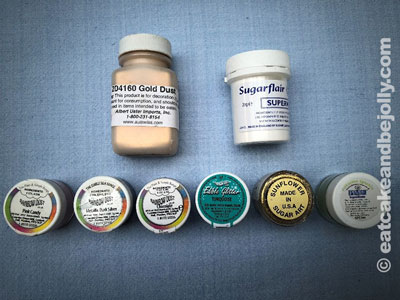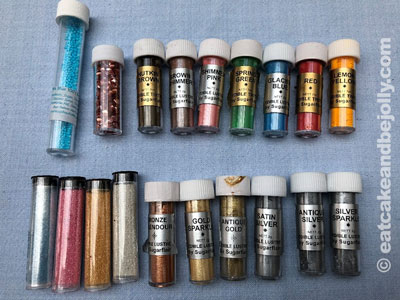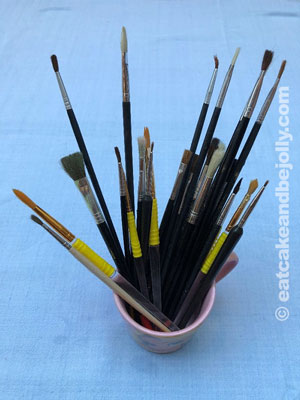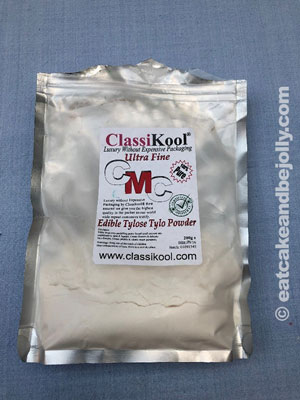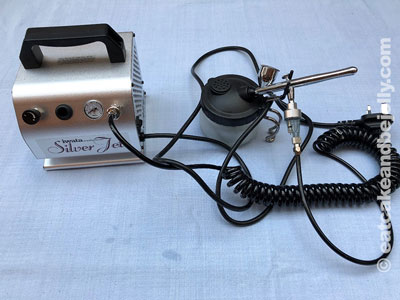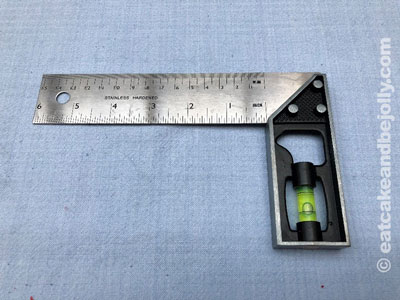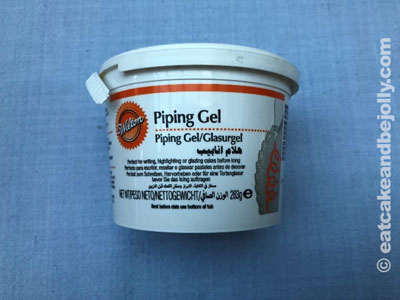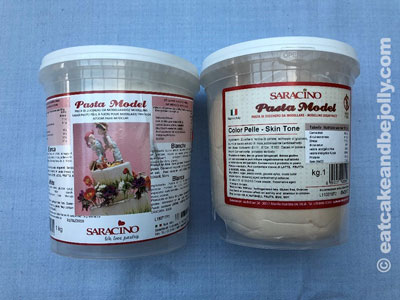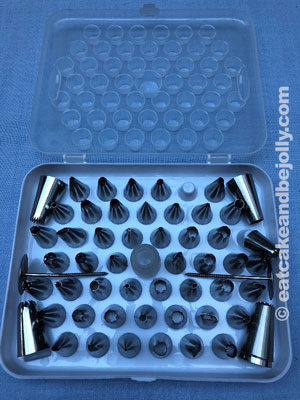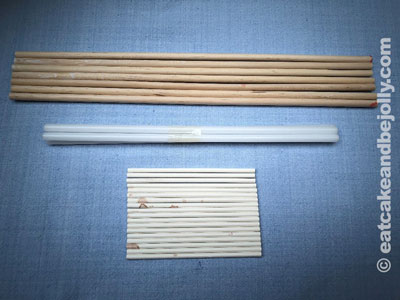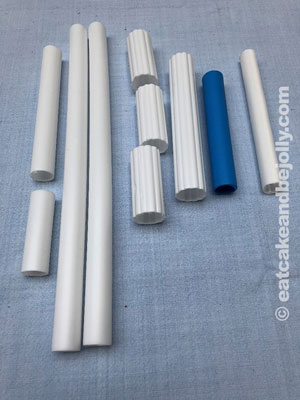Below is a collection of images of the different types of equipment I use for my cakely creations. The websites that I use for getting this equipment are all UK-based. I have found all of these suppliers to be extremely reliable and helpful. And off course, Amazon is also very useful!
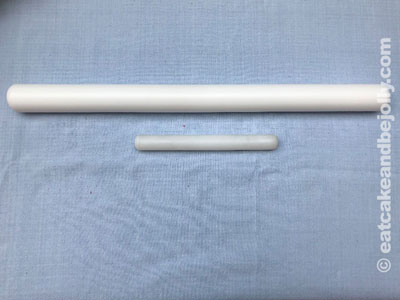
I have a long polyethylene rolling pin (60cm) and an short one (23cm). The long one is great for rolling out large pieces of sugarpaste for covering cakes or cake drums. Not only can you roll out more smoothly, you can also pick up the sugarpaste with the rolling pin to lay it over the cake/board. The smaller one is needed for small scale work. Polyethylene rolling pins are perfect for sugarpaste, as wooden ones have some texture and the plastic doesn’t stick to the sugarpaste as easily
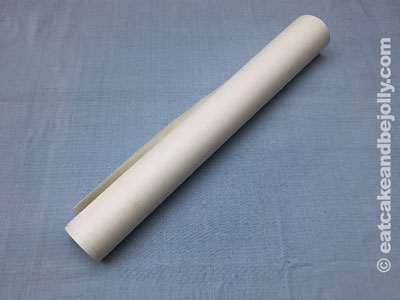
I used to sprinkle icing (powdered) sugar on a stone surface or large polyethylene board, but have found that using a rolling mat is quicker and gets better results. The only challenge is that it tends to spring back up into a roll, so I tend to pin down the corners with heavy items to help keep it flat
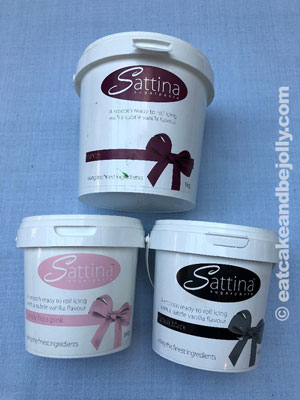
I have used a large number of sugarpaste brands over the years. Buying a good quality brand makes delicate sculpting easier. Also, buying coloured sugarpaste is useful, particularly with dark colours. In particular, black sugarpaste is really great, as otherwise you need to add a lot of colour manually and this makes the final product hard to work with. SweetArt (from Portugal) is fantastic, particularly for sculpting as it sets hard. My main brand is Sattina. I particularly like the plastic tubs, as this means you can reseal and reuse it without too much drying out
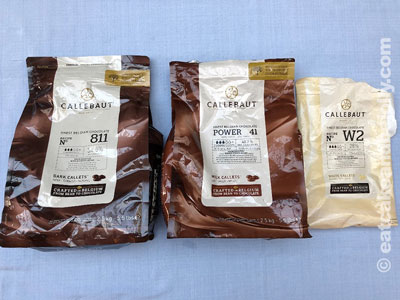
For chocolate, I always use Callebaut. It is a proper, professional brand that performs well (and is easy to temper), yet isn’t too expensive. I always use the microwave technique for tempering. There are lots of YouTube videos about this technique (including one by Callebaut) and these make it easy. Tempering is crucial if you are trying to get chocolate to set (clearly, it is not necessary if you are using chocolate as an ingredient in a ganache etc.). This applies to dark, milk and white chocolate. Buying chocolate chips (‘callets’) makes it much easier to melt them compared to blocks
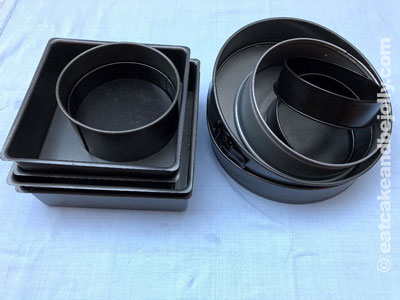
I have accumulated lots of different sizes and shapes of baking tins over the years. Thicker, higher quality ones are always worth buying, as they build and retain heat more evenly. Ones with removeable (‘springform’) bases are useful, as it reduces the possibility of the cake breaking up when you unmould it
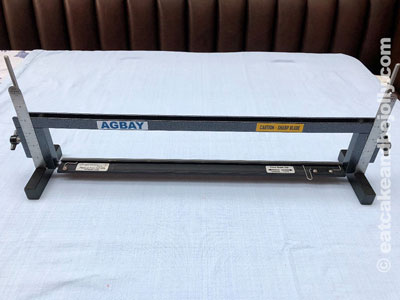
The final, and most extravagant piece of equipment that I own is an Agbay cake slicer/leveller. You can buy cheap cake levellers (that look like coat hangers) that do the job fine and are adjustable. The Agbay costs a lot of money, but is fantastic. Hard to justify if you aren’t a full-time cake maker, but wonderful to own and use! It is ultimately adjustable, and the serrated blade is very sharp
